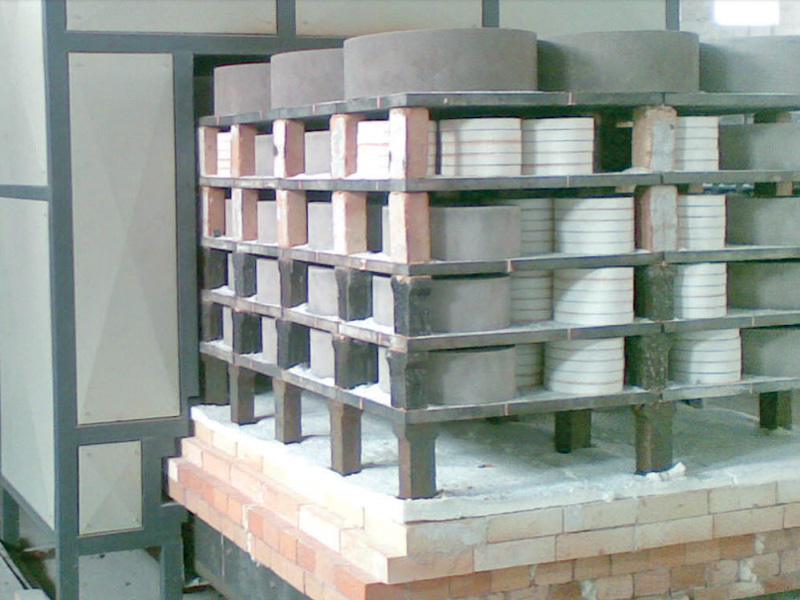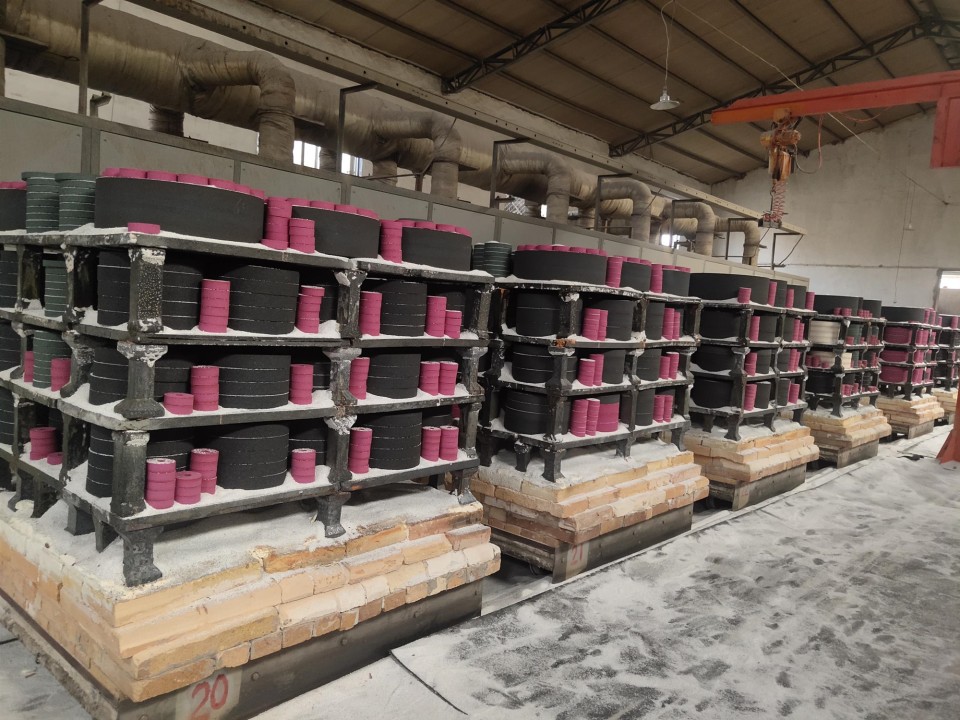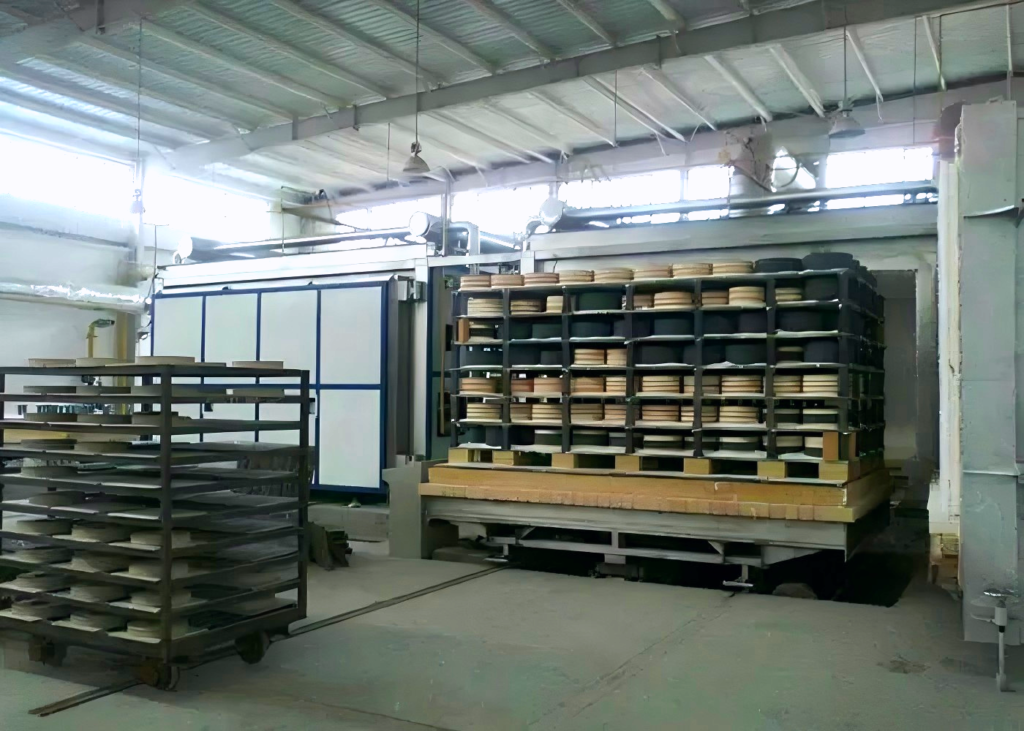Abrasive grinding wheels



Abrasive grinding wheels are precision-engineered tools used for cutting, grinding, and finishing operations across a wide range of industrial applications. They are primarily composed of abrasive grains (such as aluminum oxide, silicon carbide, or diamond) bonded together by materials like vitrified ceramic, resin, or metal.
Their primary function is to remove material from workpieces through abrasive action, ensuring accurate surface finishes, tight tolerances, and high productivity in manufacturing processes.
During production, vitrified-bonded grinding wheels require high-temperature firing to develop the desired strength and bonding integrity. These firing temperatures typically range from 1830°F to 2190°F (1000°C to 1300°C), depending on the bond type and product specifications.
To support these wheels during firing, kiln furniture made from high-performance refractory materials—such as cordierite-mullite plates, setter plates, beams, props—are used. These components must offer excellent thermal shock resistance, mechanical strength, and dimensional stability to withstand repeated firing cycles and maintain the shape and quality of the grinding wheels.
logo-300x127.png)